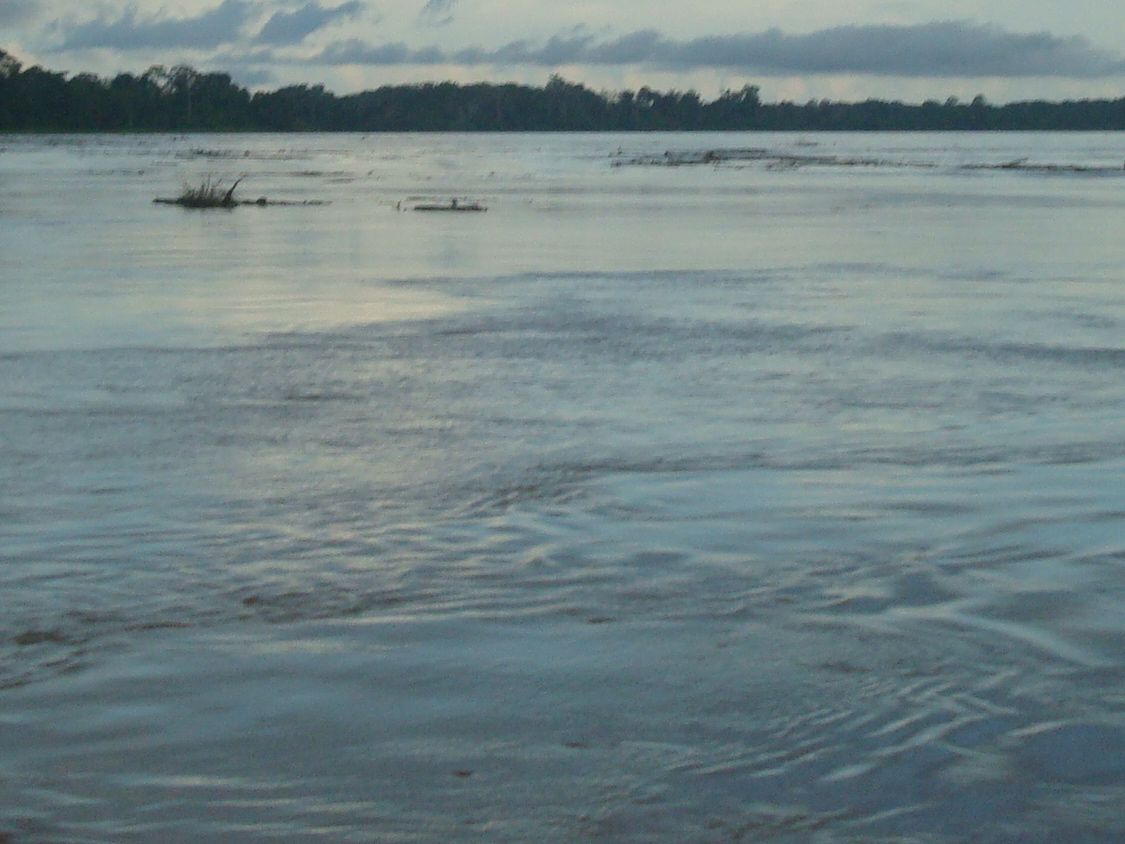
| Diary entry for first morning on the Amazon: This river is huge. It is at least a mile across and the water is chocolate brown, turbulent, and moving fast. Every few minutes a single log or a raft of logs goes whizzing by. |  |
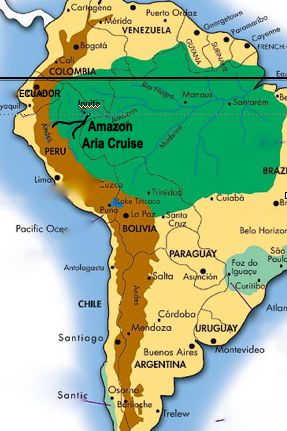 |
We live in Southern
California, essentially a desert where our rainfall is
measured in inches (and we feel lucky to have a foot of rain
in a year). We visited an area of the Amazon River
with rainfall measured in yards (as in 10 yards of rain a
year, or 30 feet, or 360 inches). We will try to give
this a little perspective. We went to the "Birthplace Of The Amazon," where the Ucayali and Maranon Rivers converge near Nauta, Peru. Each of these tributaries is over 1000 miles long and it is another 2400 miles from this point to the Atlantic Ocean. The Amazon River is the largest river in the world in terms of volume of water. The Amazon Basin, or the area of land which feeds the Amazon River (the green area on the map), is almost the size of the lower-48 of the United States. The change in elevation from Nauta to the Atlantic is less than 1000 feet. That is, imagine an area of land about the size of the United States that is completely flat, no mountains and some occasional rolling hills. As shown on the map, we traveled a couple of hundred miles up stream from Iquitos, Peru to the Pacaya Samiria National Reserve (a National Park), exploring some large and some very small tributaries. We saw the jungle. We saw the exotic birds and animals. We saw the river. We experienced only two rainy days (out of 8). We saw the natives in their homes and fishing in the river. But what was overwhelming and incomprehensible was to be told over and over again that the water level had come up about 20 feet already, and had another 10 feet to go. The water lines on the trees verified these remarks. Everywhere we went we saw villages of stilted houses with the floors easily ten feet higher than the current water level. |
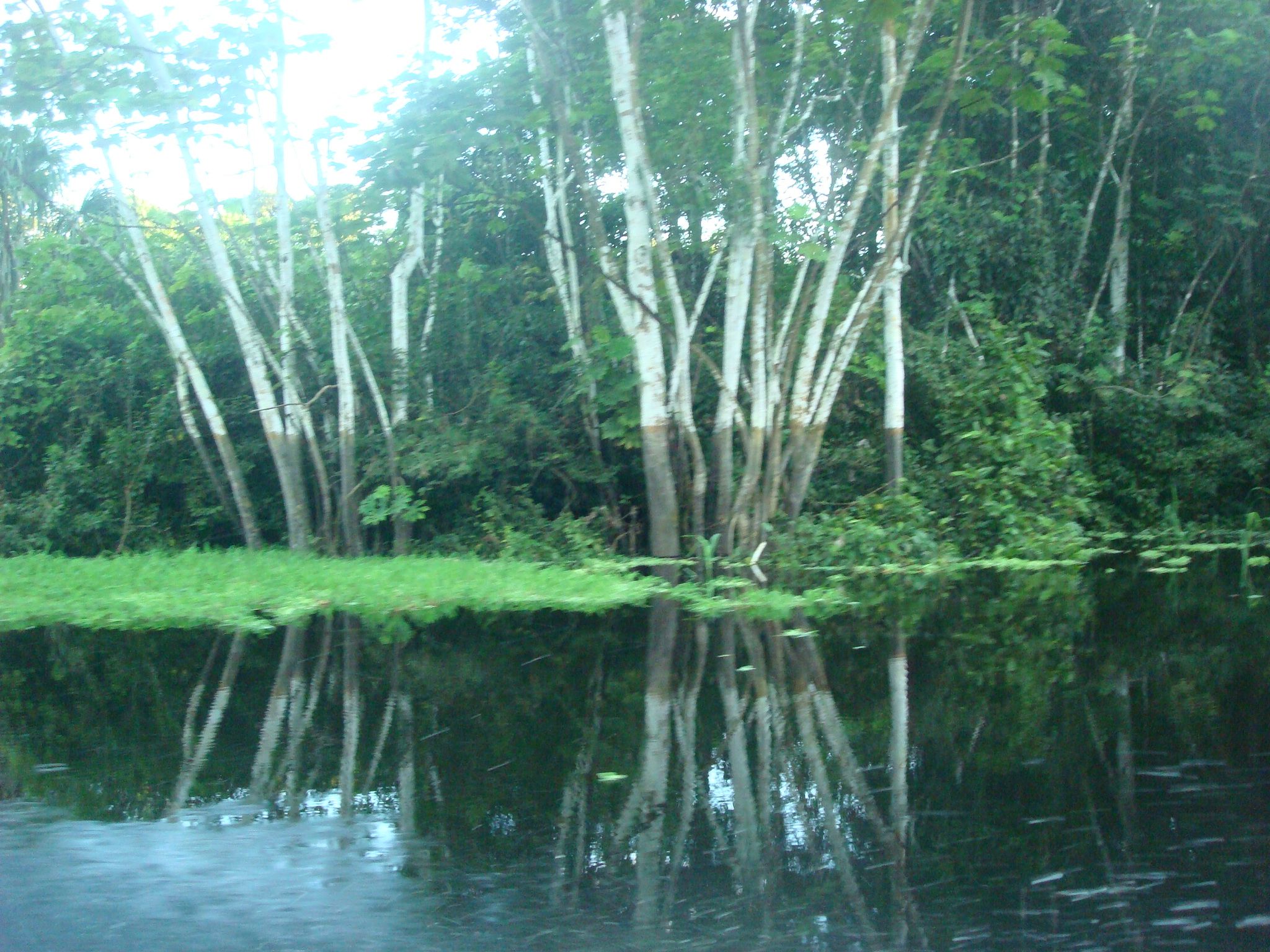 |
. |
 |
| Water
line on trees |
Still dry
out-front... |
but water
is rising |
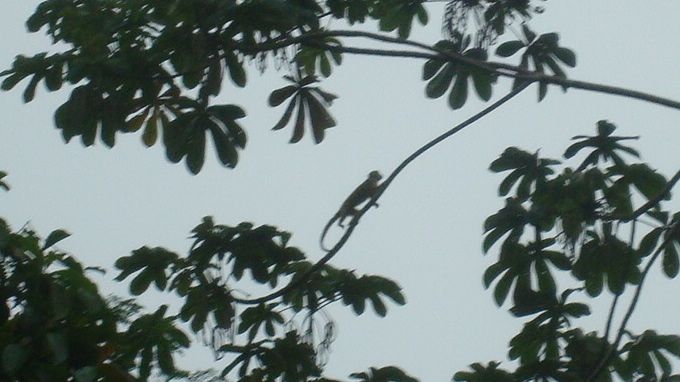
|
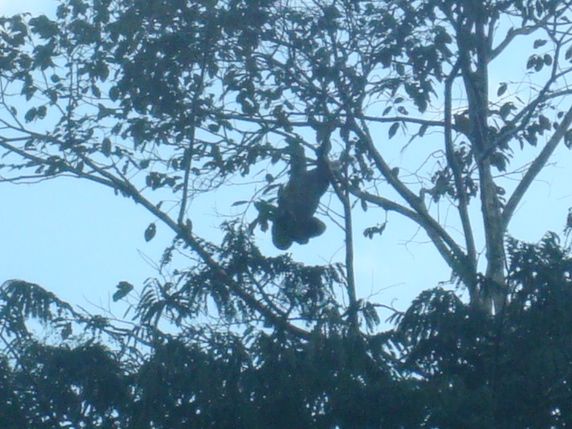
|
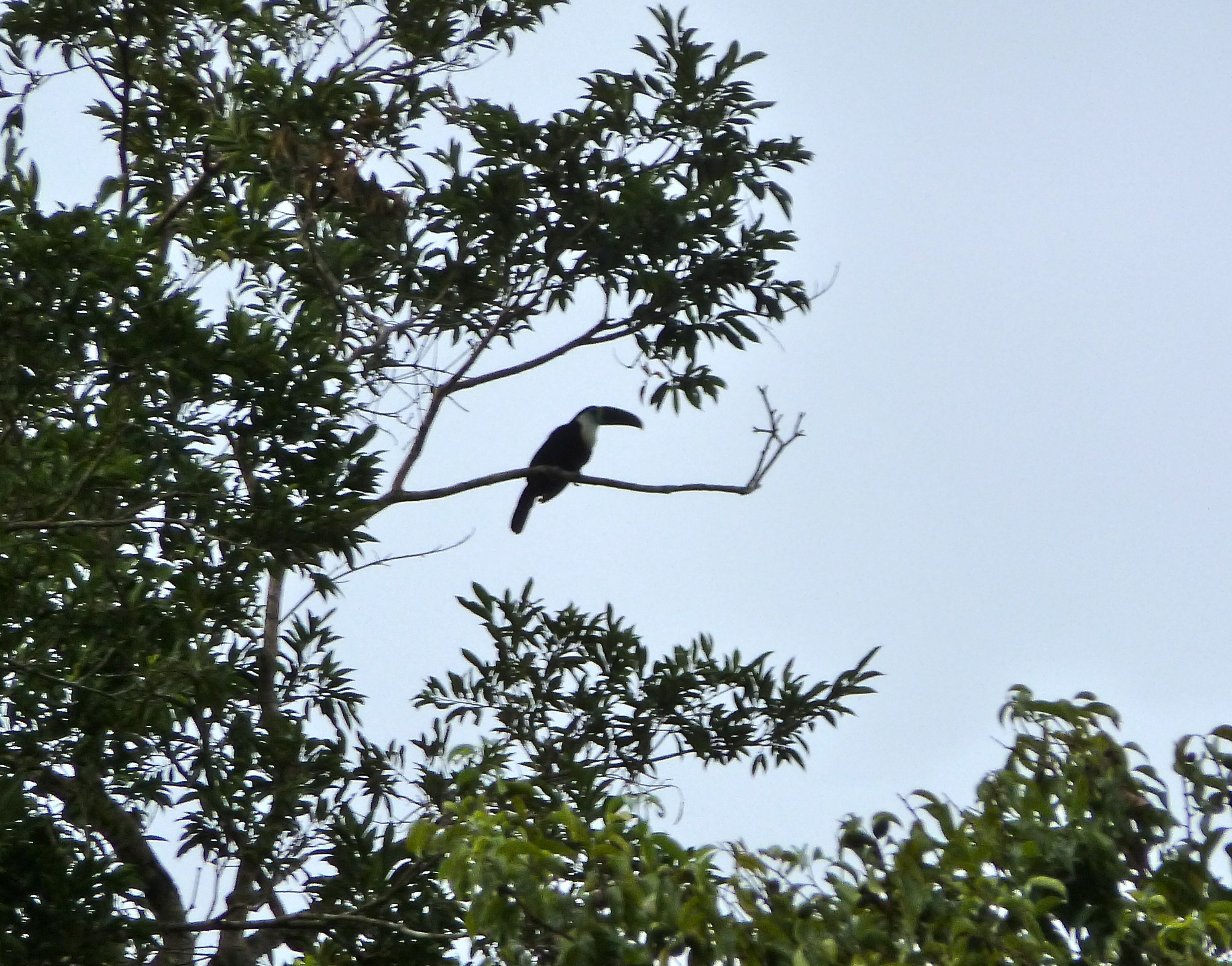 |
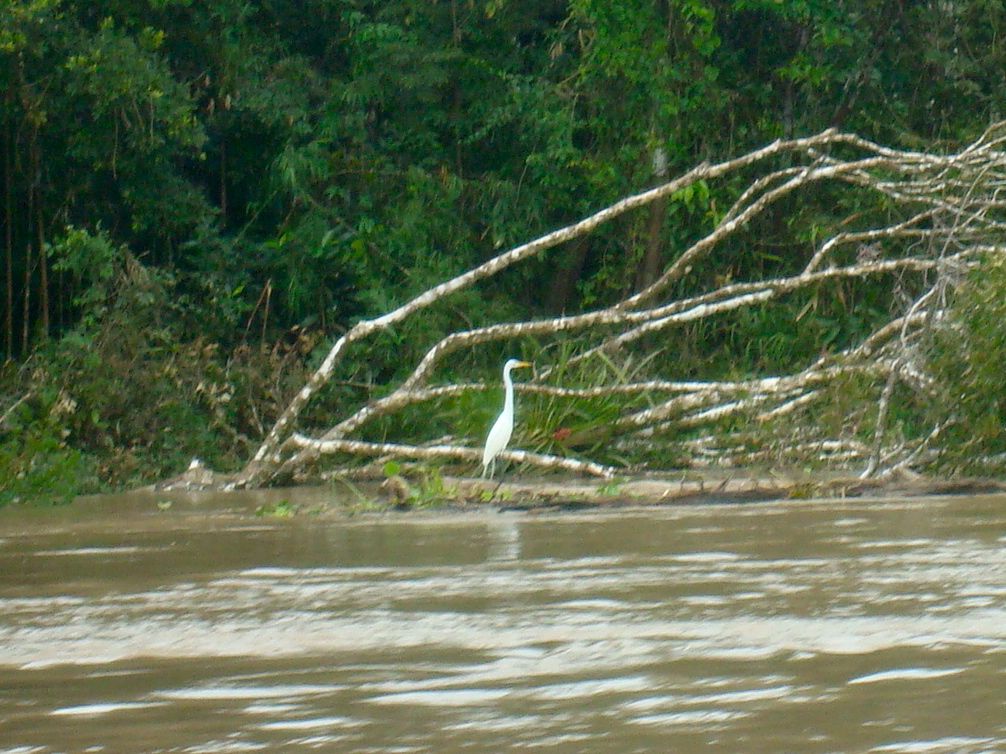 |
| Common
Squirrel Monkey |
Brown-throated
Three-toed
Sloth |
Toucan |
Great
Egret |
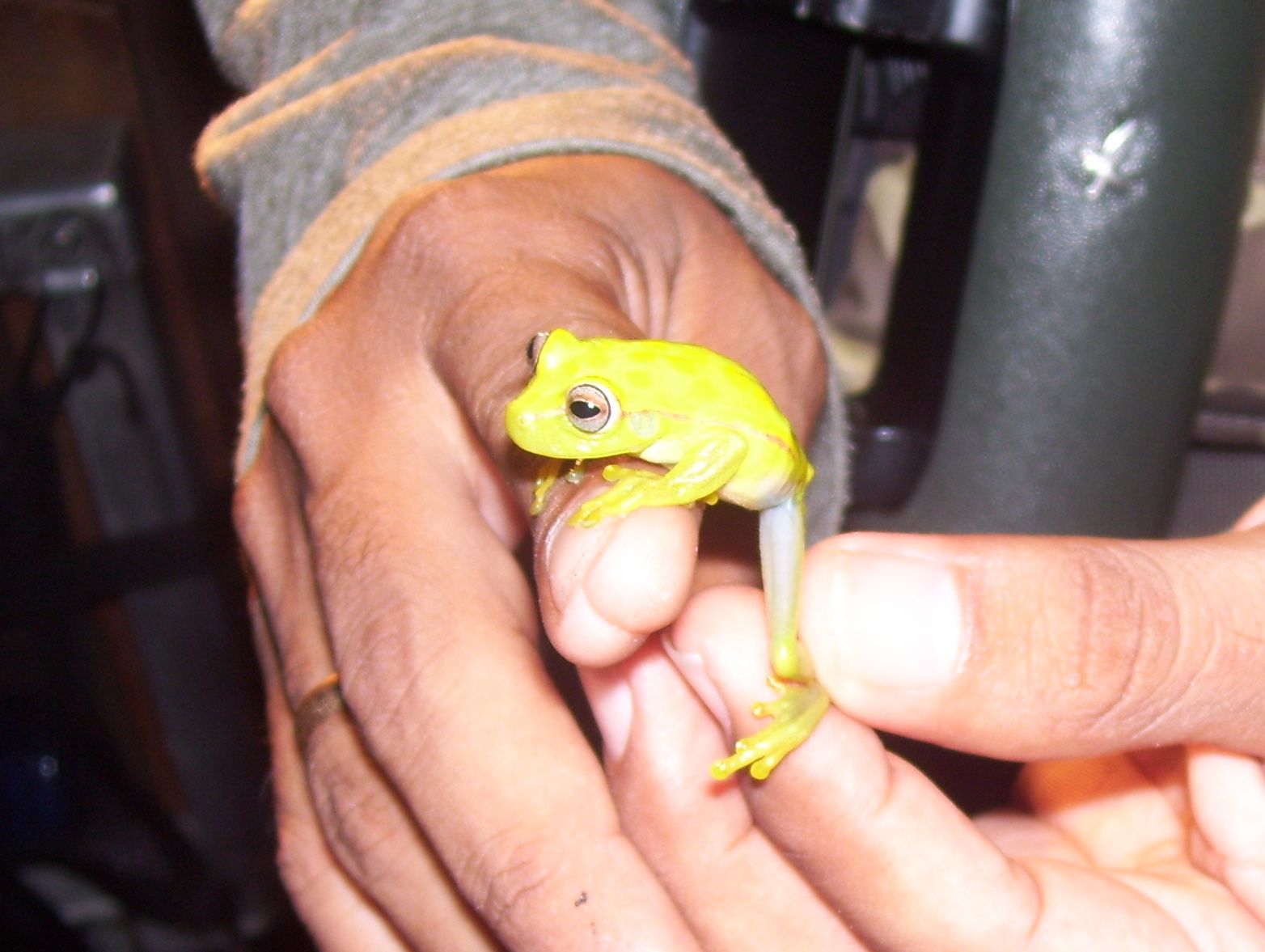 |
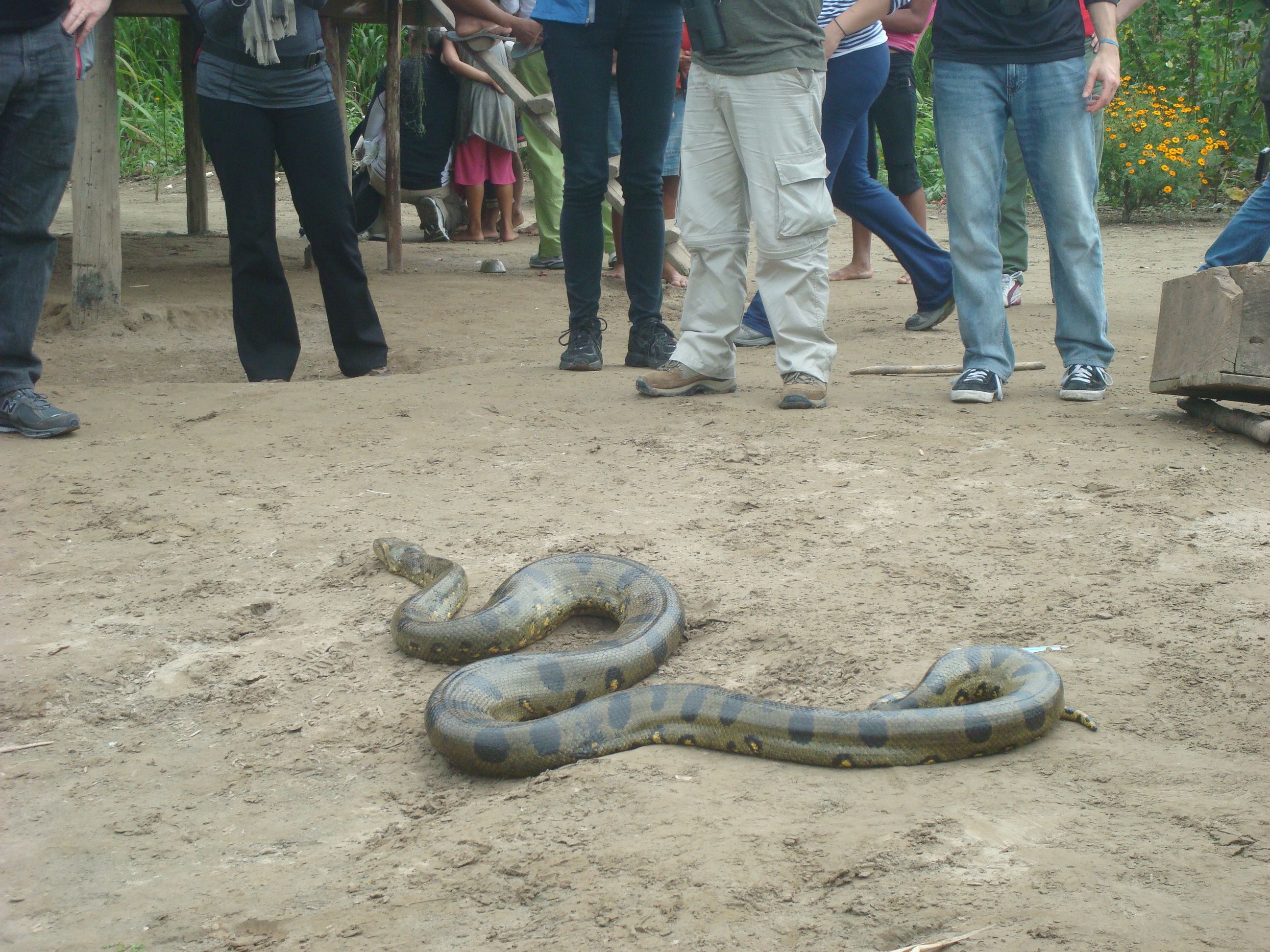 |
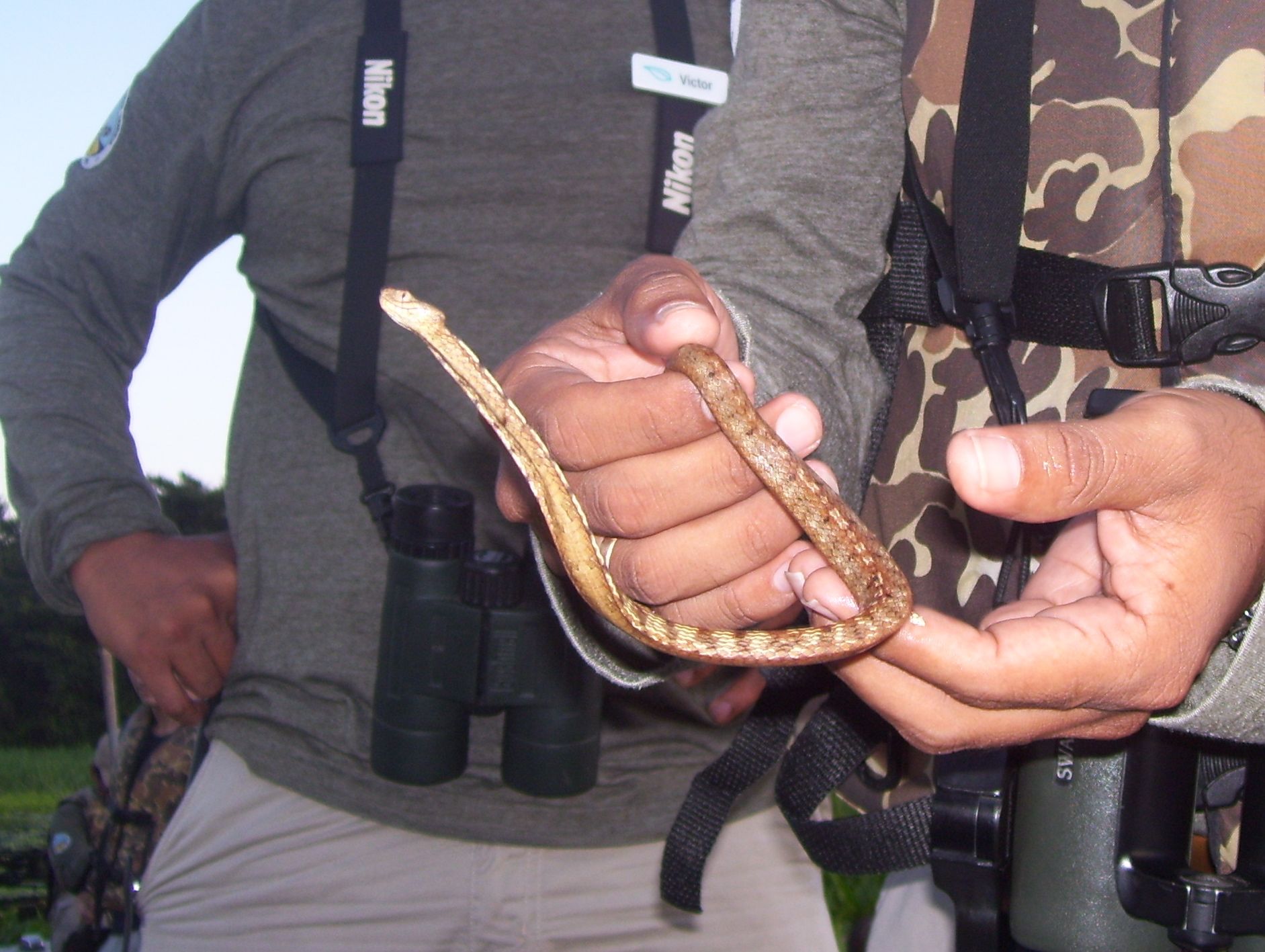 |
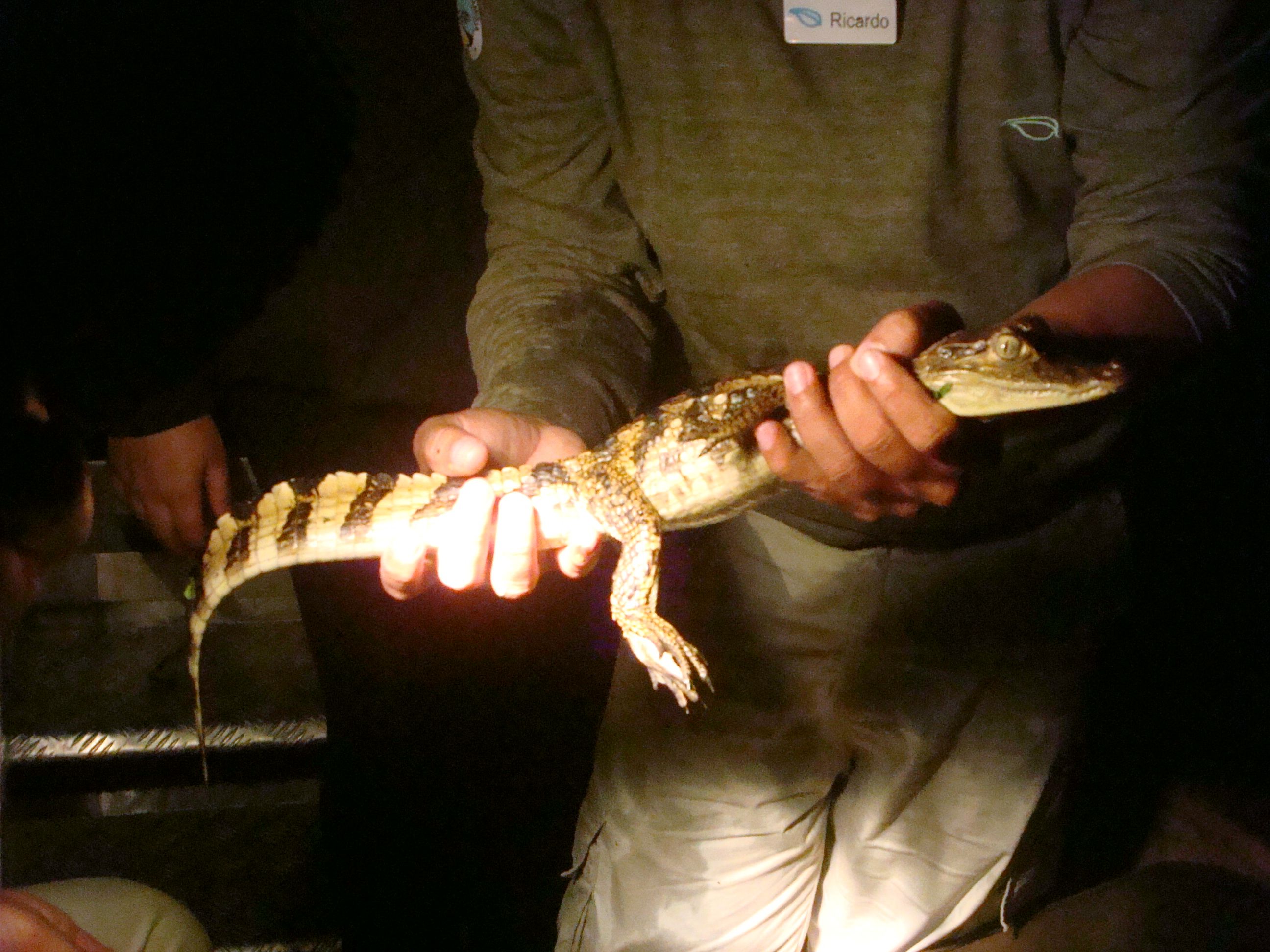 |
| Cane Toad |
Common
Anaconda -- caught by fisherman |
Short
nosed
lizard snake |
Speckled
Caiman |

|
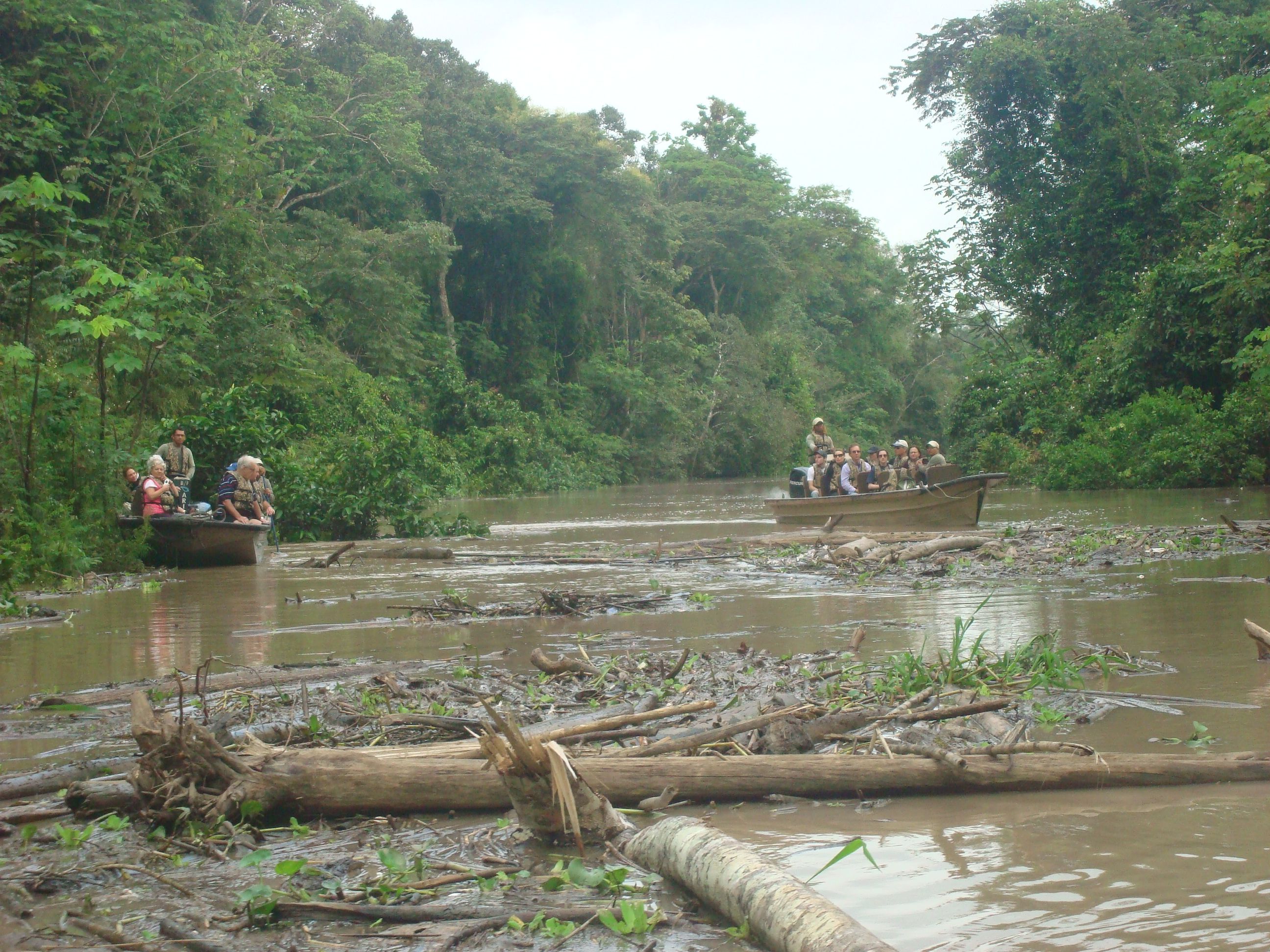 |
 |
| (E-ticket) Jungle Boat Ride on a skiff | Log jam |
Lilly pad jam |
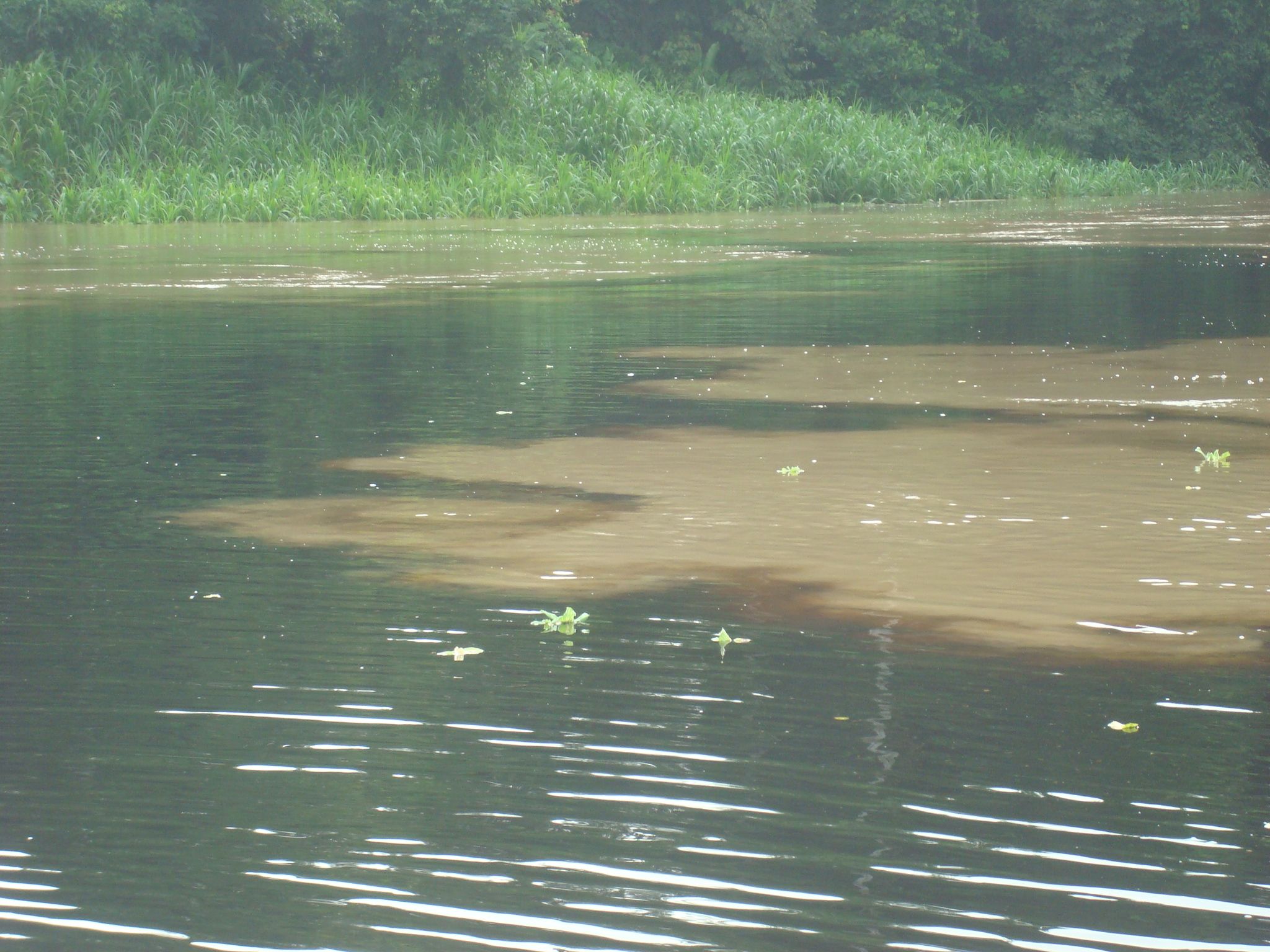
|
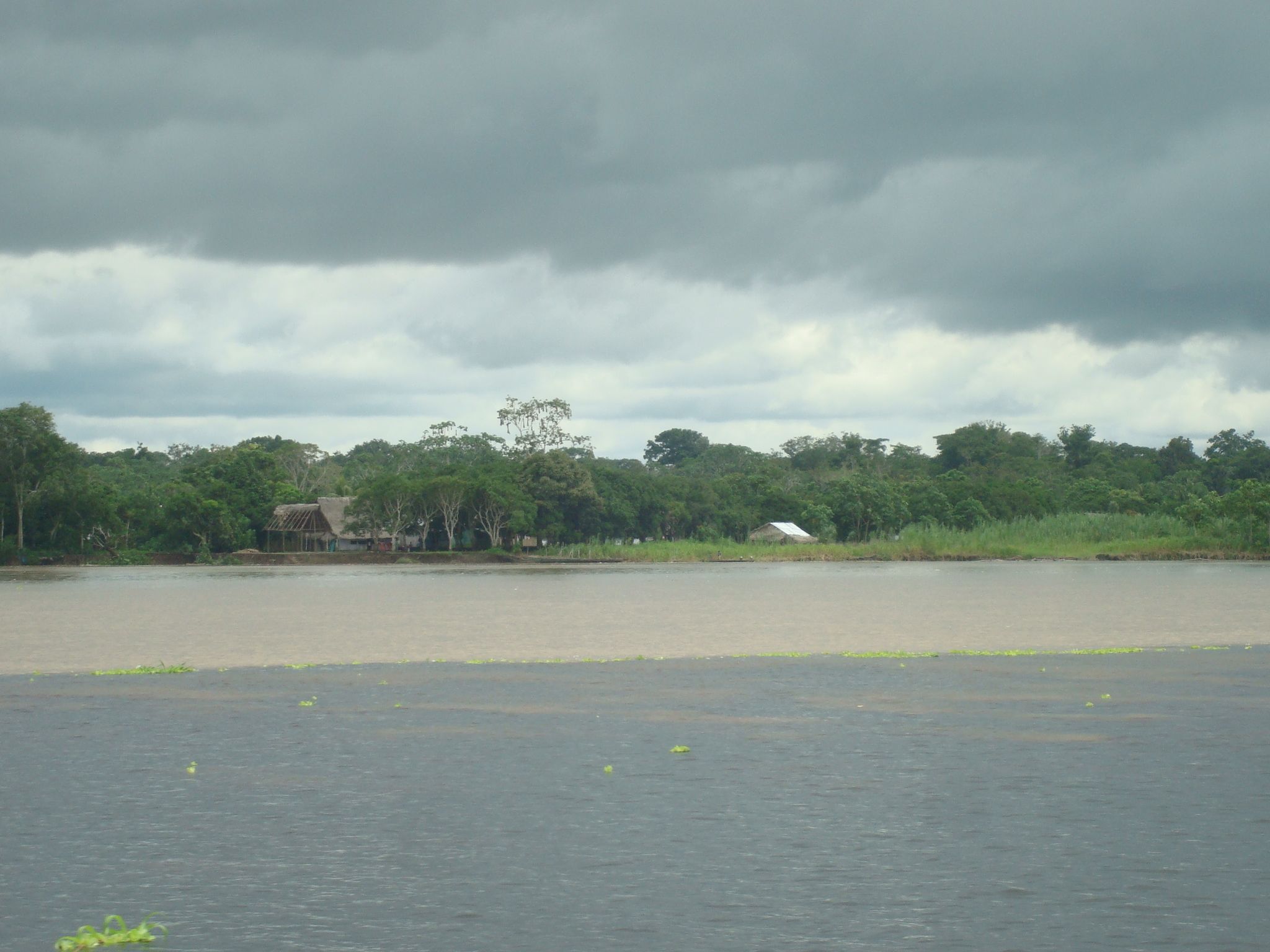 |
| Mixing of
brown and black water in tributary |
Demarcation
line
of black and brown waters |
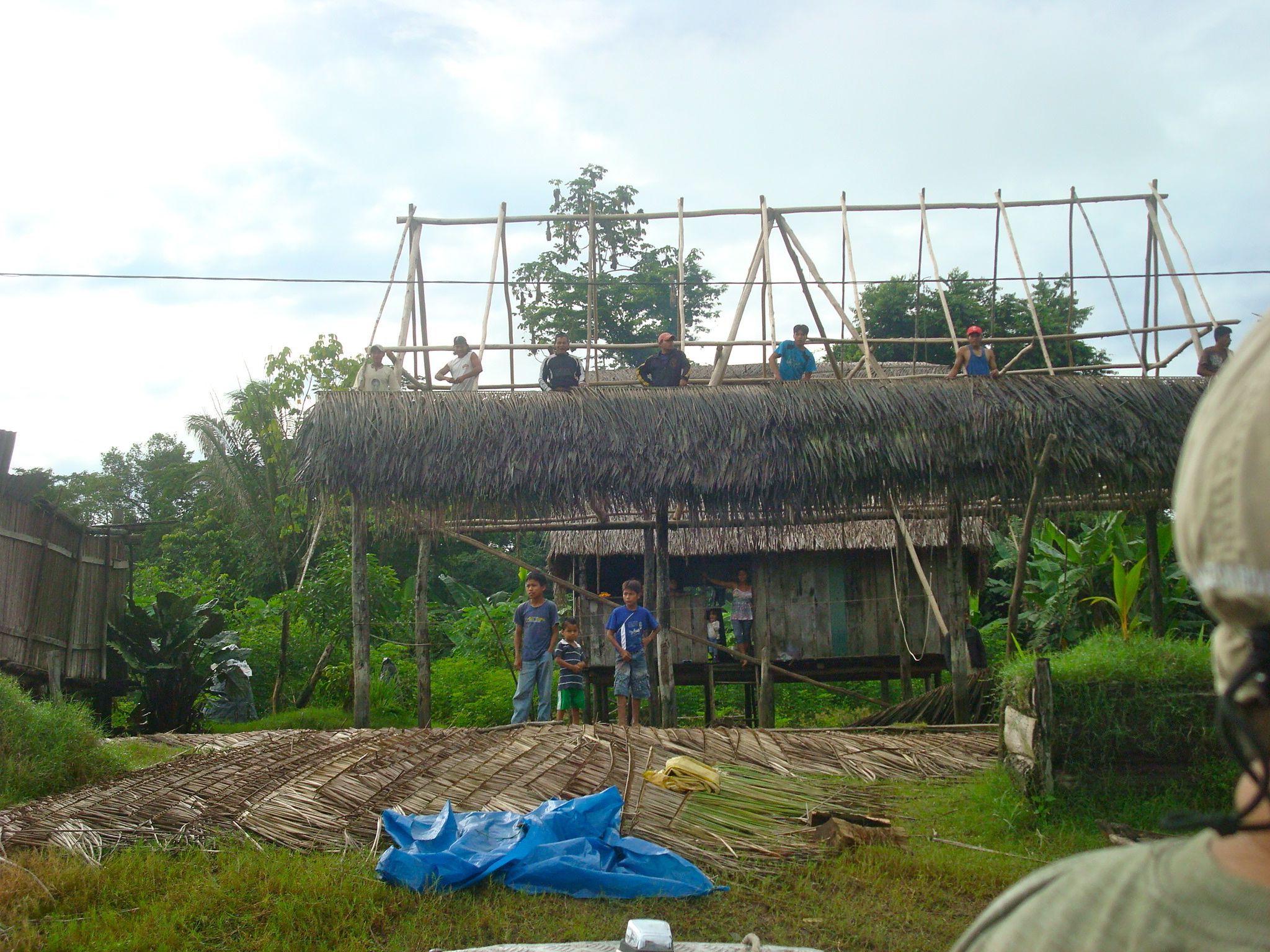 |
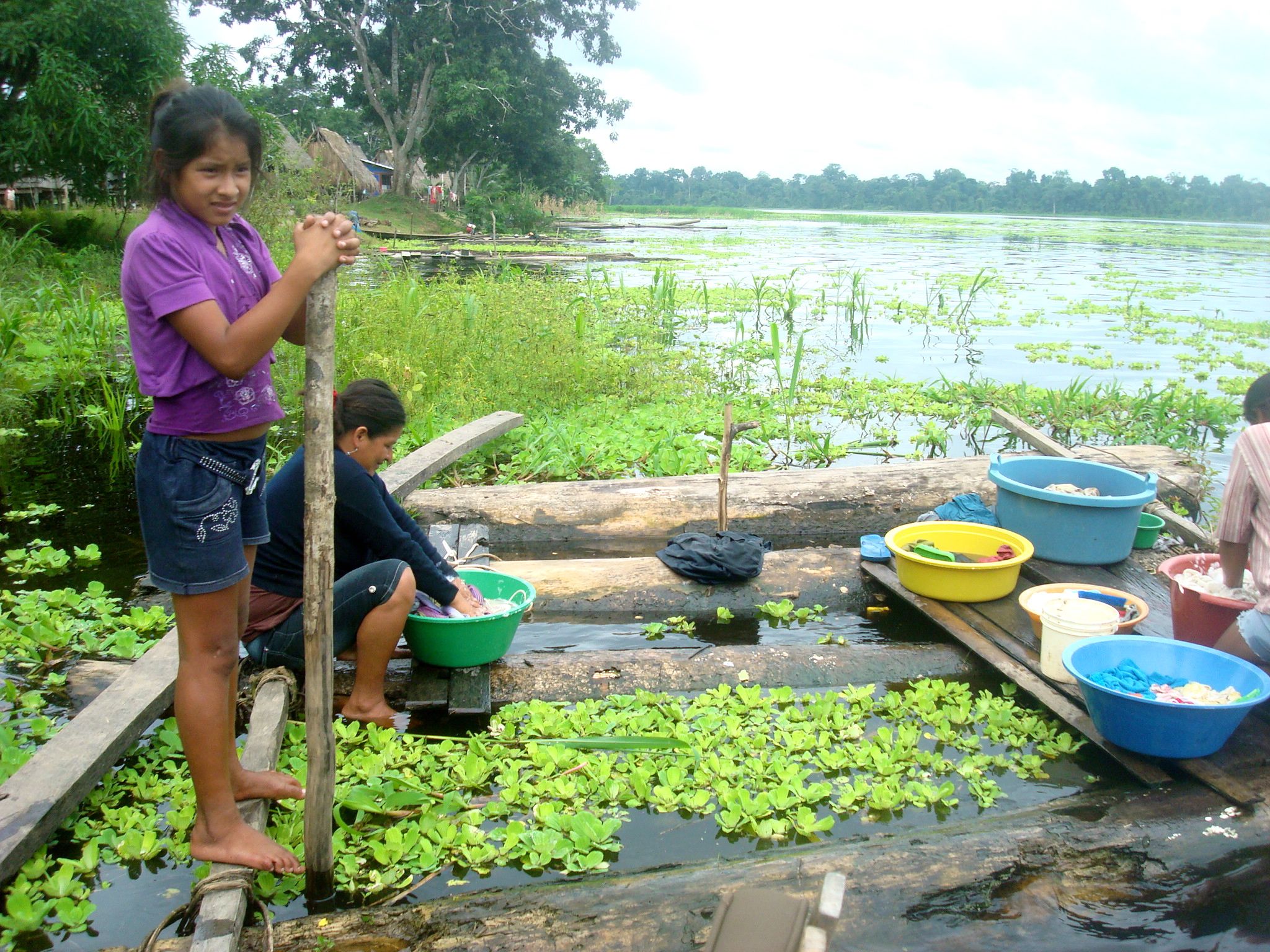 |
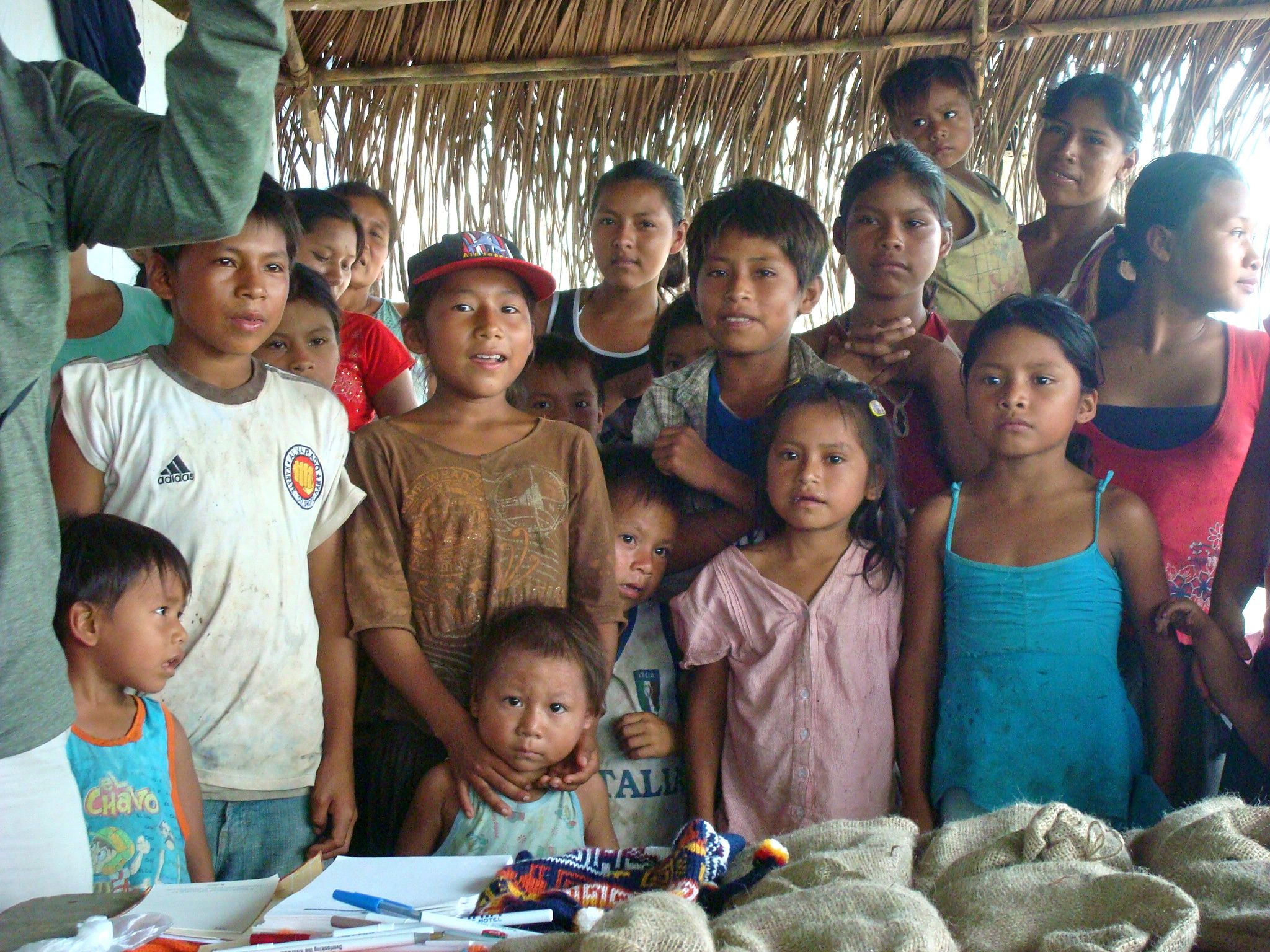 |
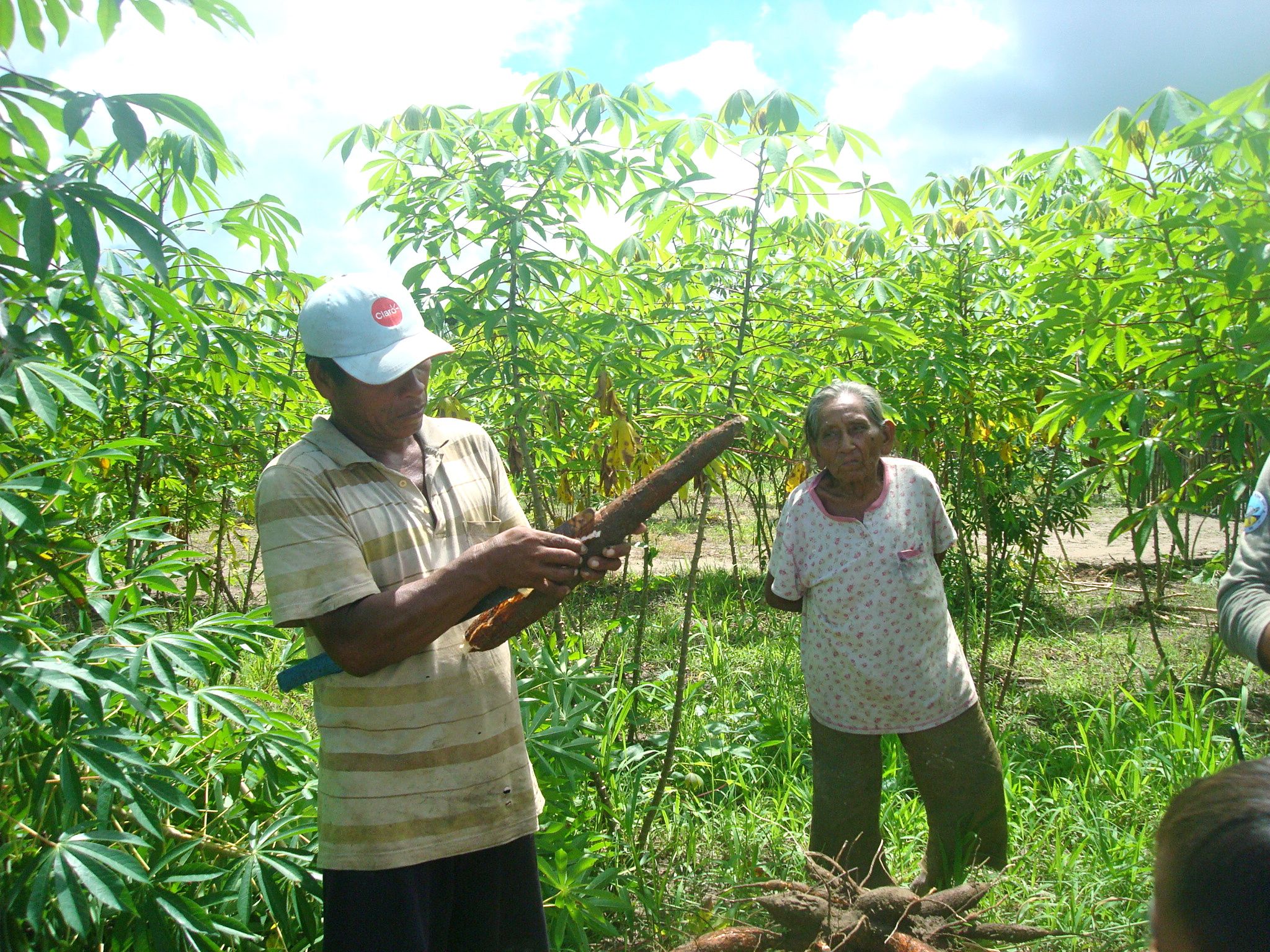 |
|
| Thatching
a roof |
Doing
laundry |
Visiting
with the village children |
Harvesting
cassava
root |
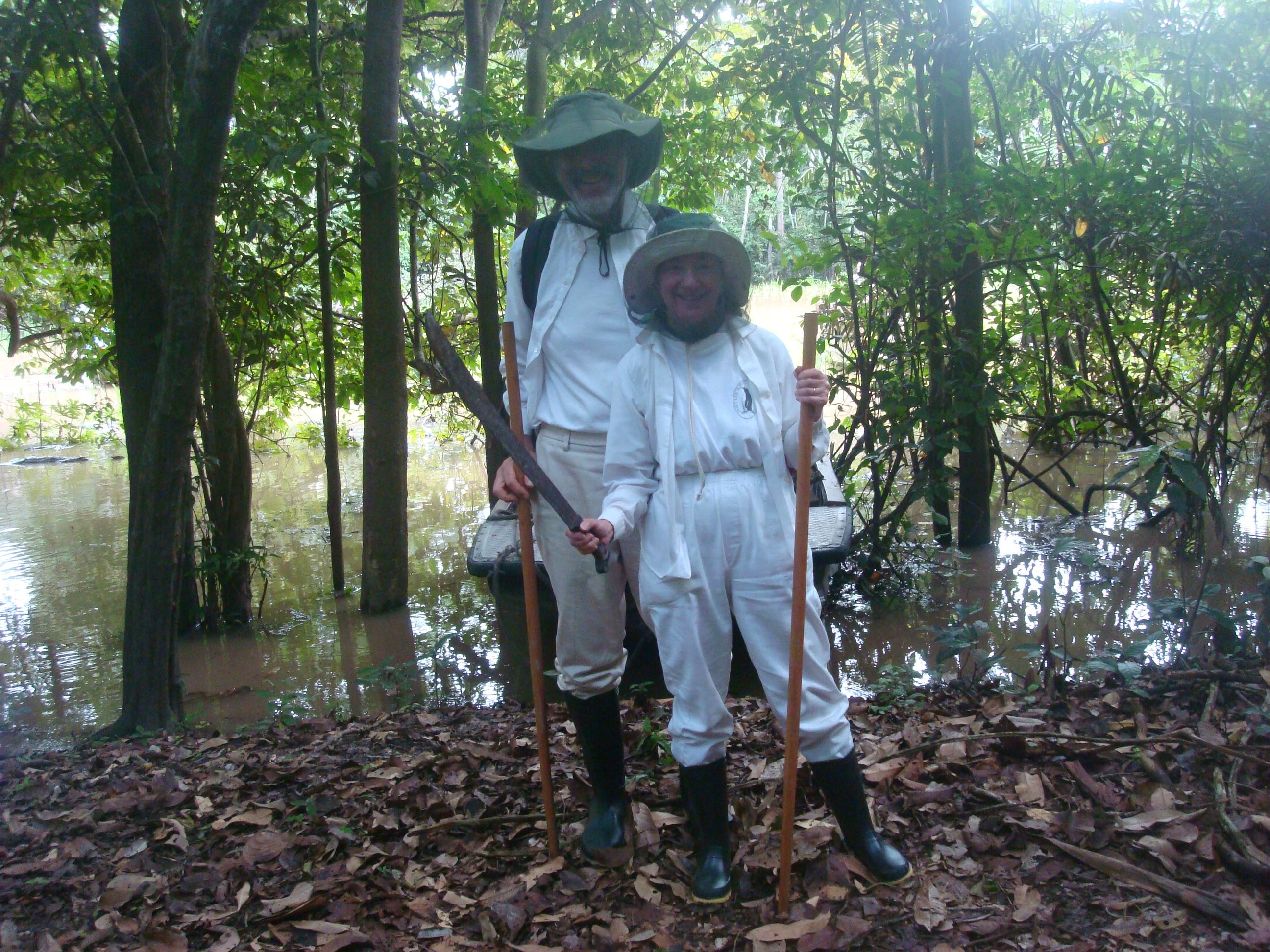 |
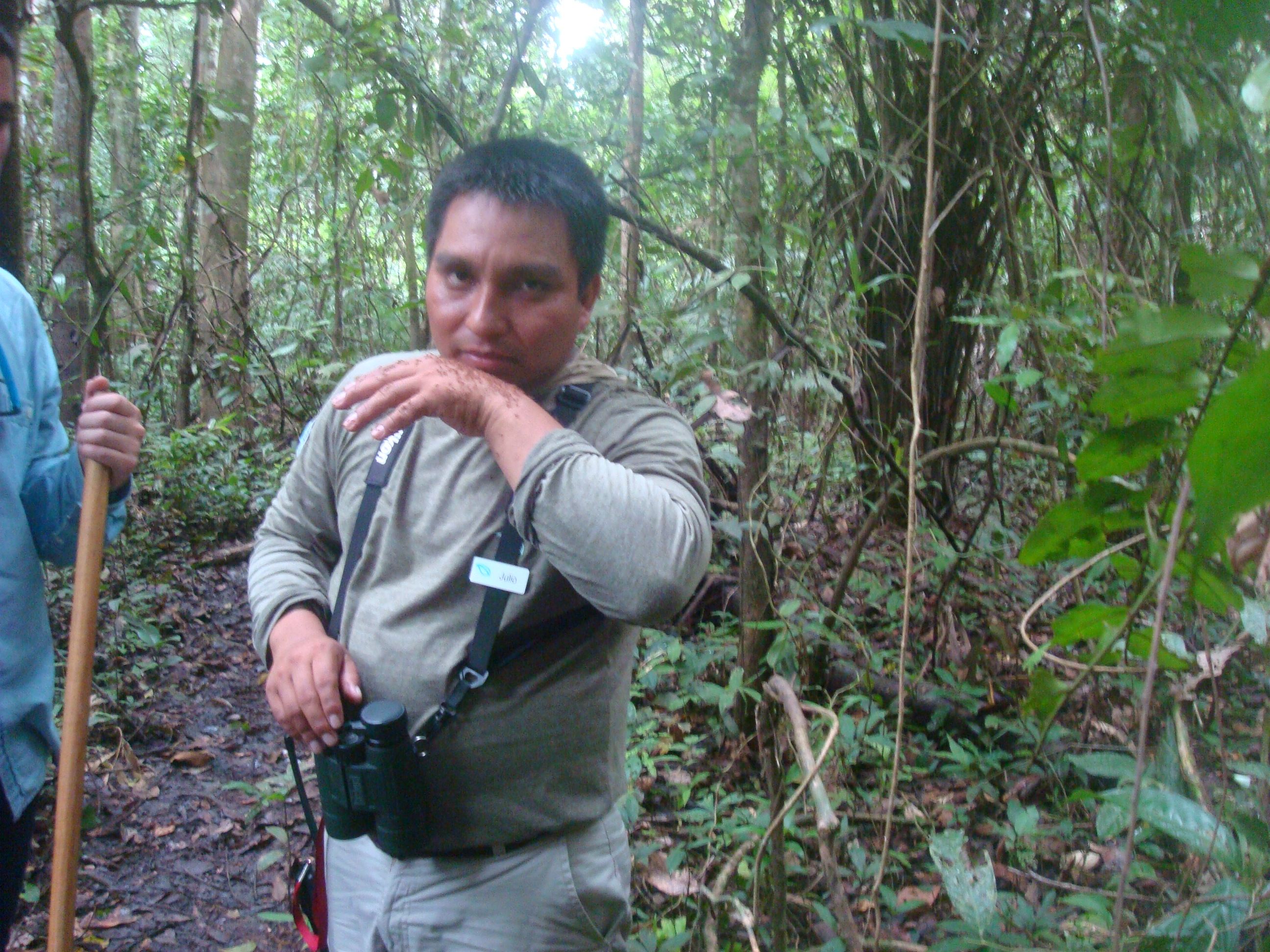 |
 |
| First
hike (of only two); forest not yet completely under
water |
Eating
termites -- natural mosquito repellent |
Eating
grub found in palm nut (in right hand) -- a local delicacy |
| We went fishing and each caught a piranha. They are a small fish, from 4 to 8 inches, with a red belly, and nasty bite. | 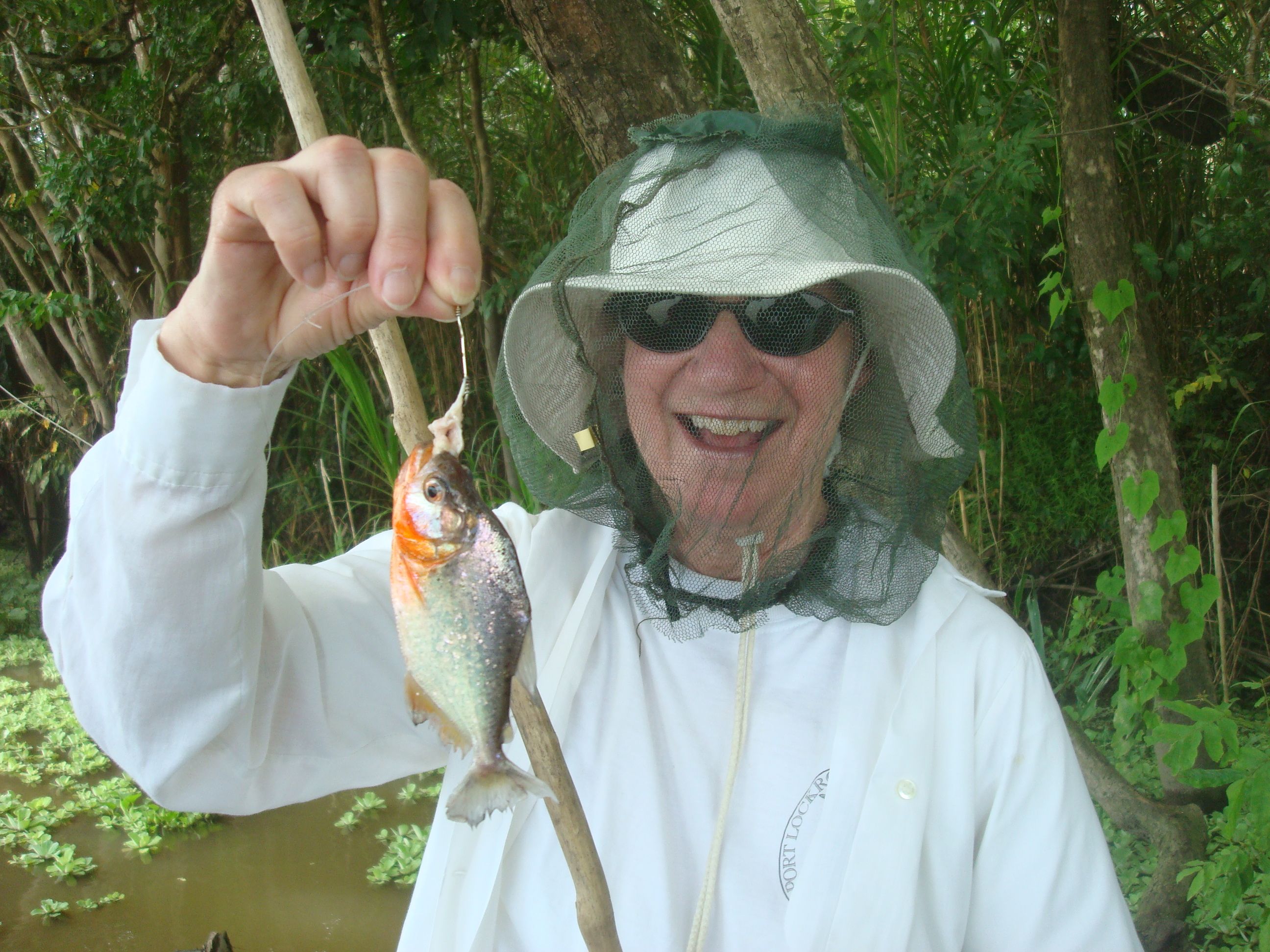 |
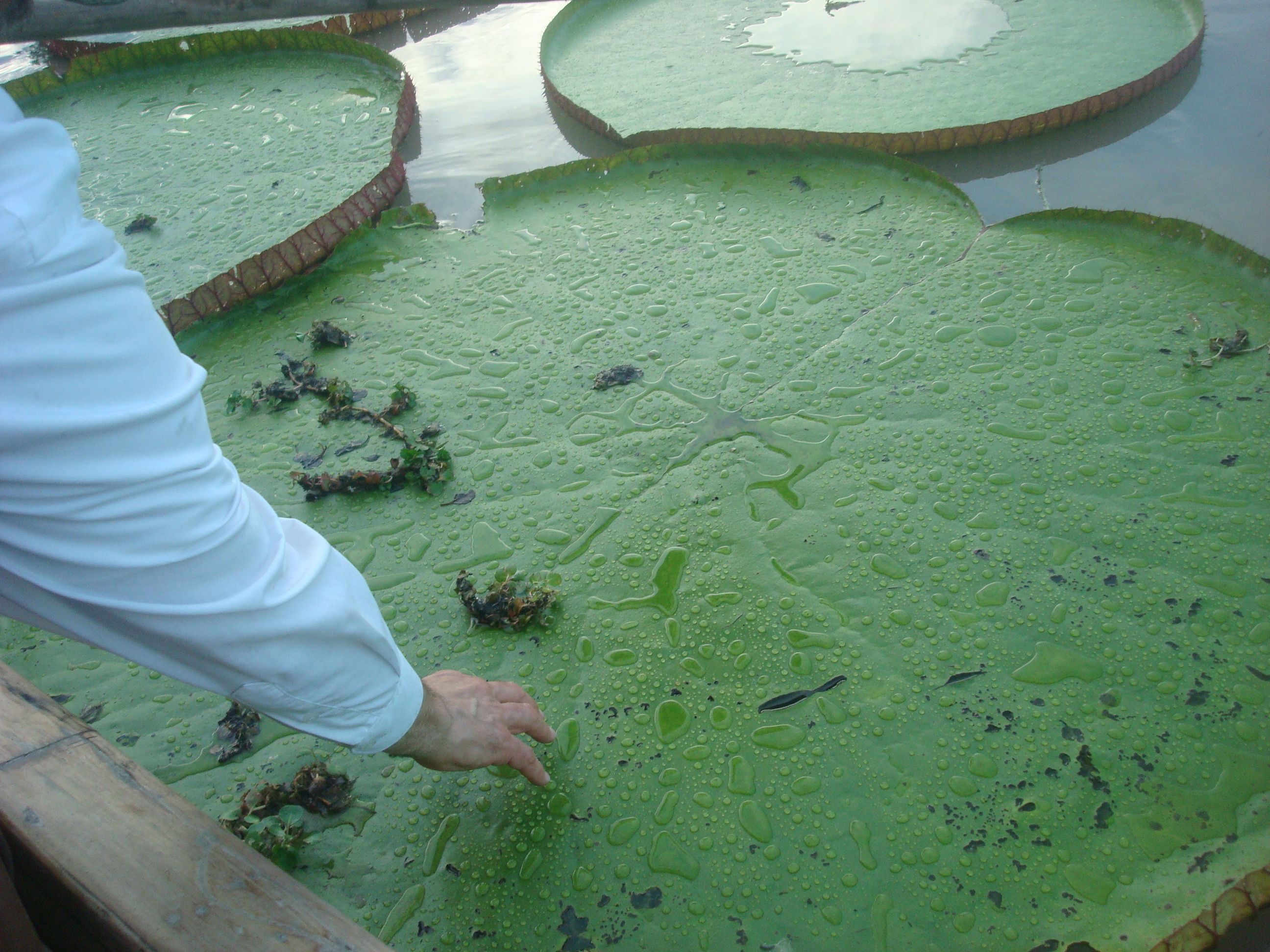 |
We saw the Amazon Lilly Pad, three to four feet in diameter, and we saw spider webs that were 10 to 12 feet across with zillions of tiny (about 1/2 inch) spiders. |
| A Red
Howler Monkey jumped from tree to tree across a stream
DIRECTLY over our heads. (Picture taken by one of our
shipmates.) |
 |
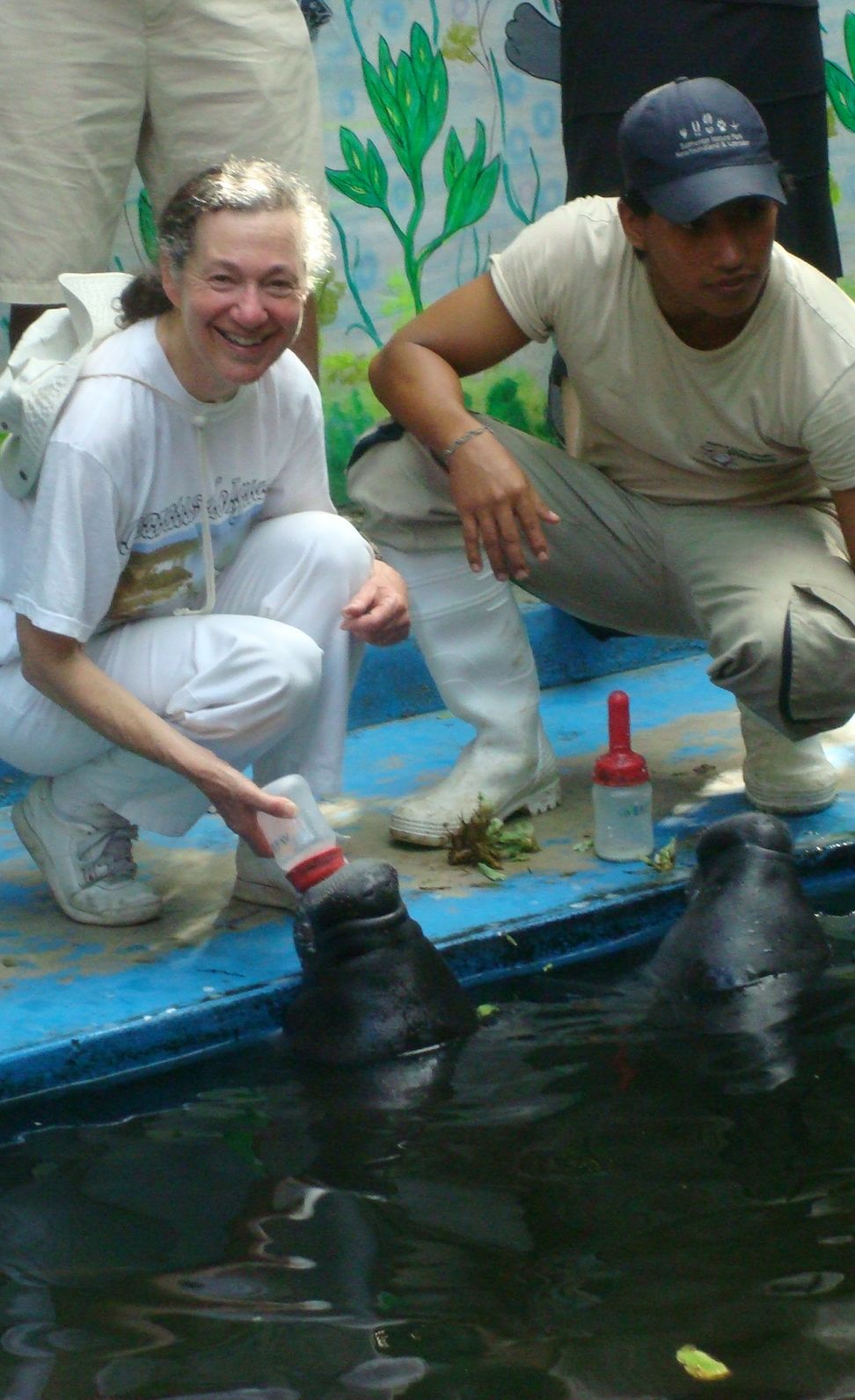 |
We went to a manatee rescue center and got to bottle feed some manatees. The center does an education program with the natives when reintroducing these beautiful mammals into the wild to help them survive. (We also went to a rescue center where they were breeding turtles and 8 foot long "lung" fish. When mature, they are reintroduced to areas where they have been over fished.) |
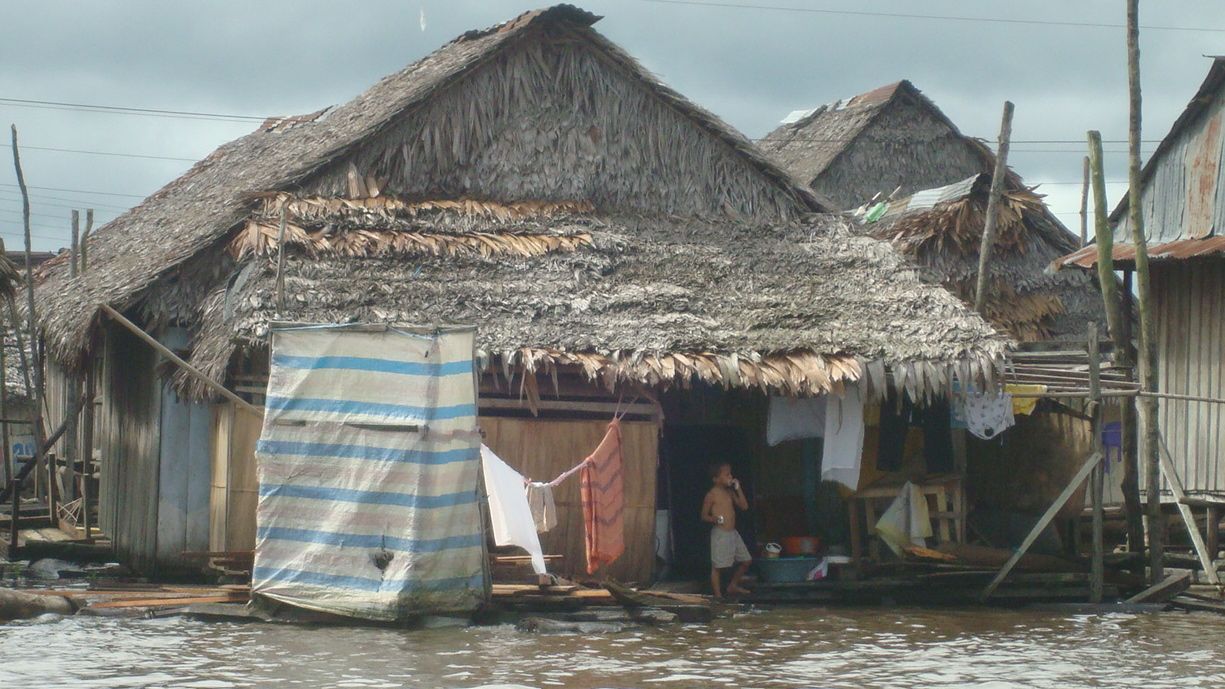 |
 |
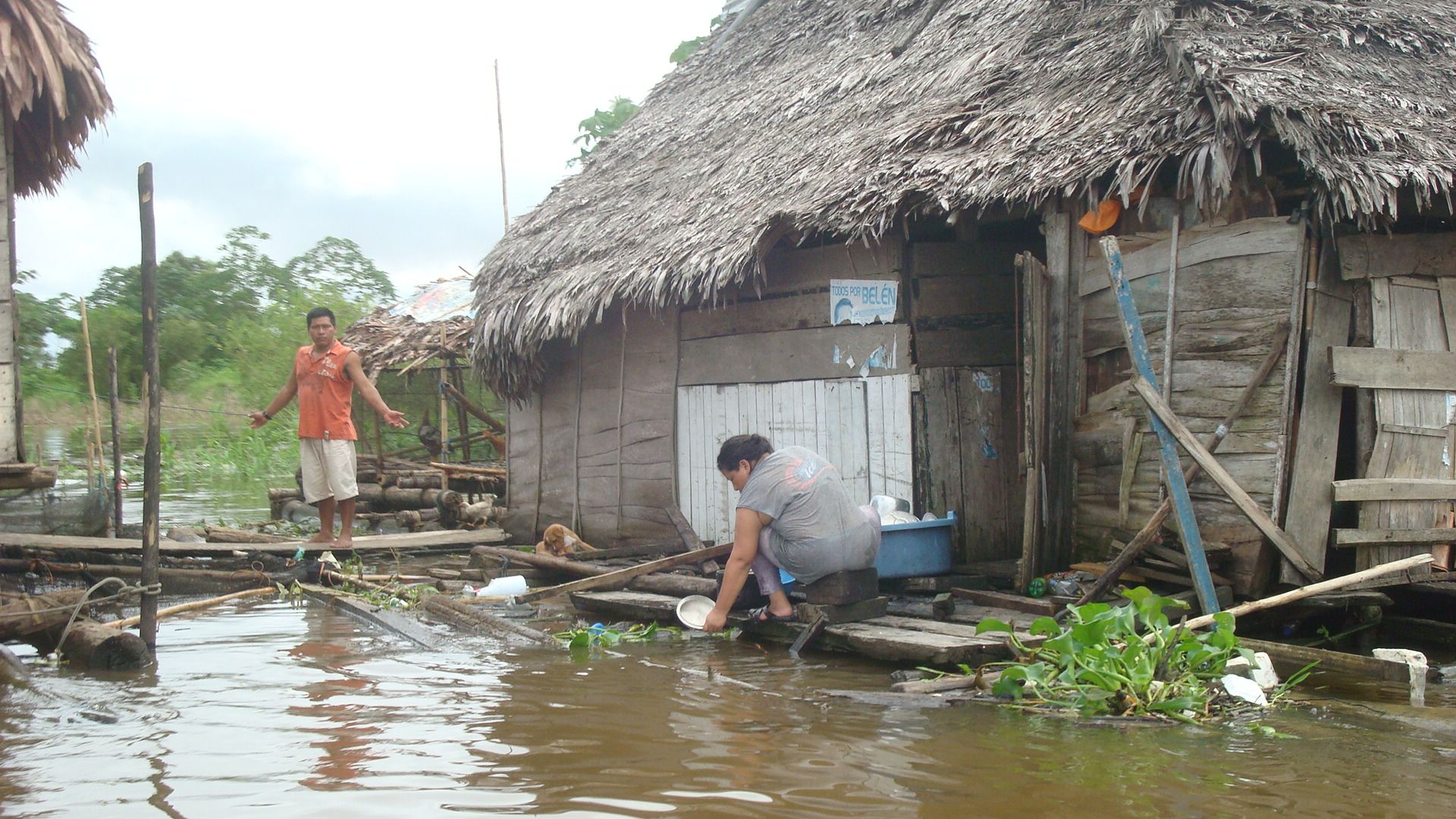 |
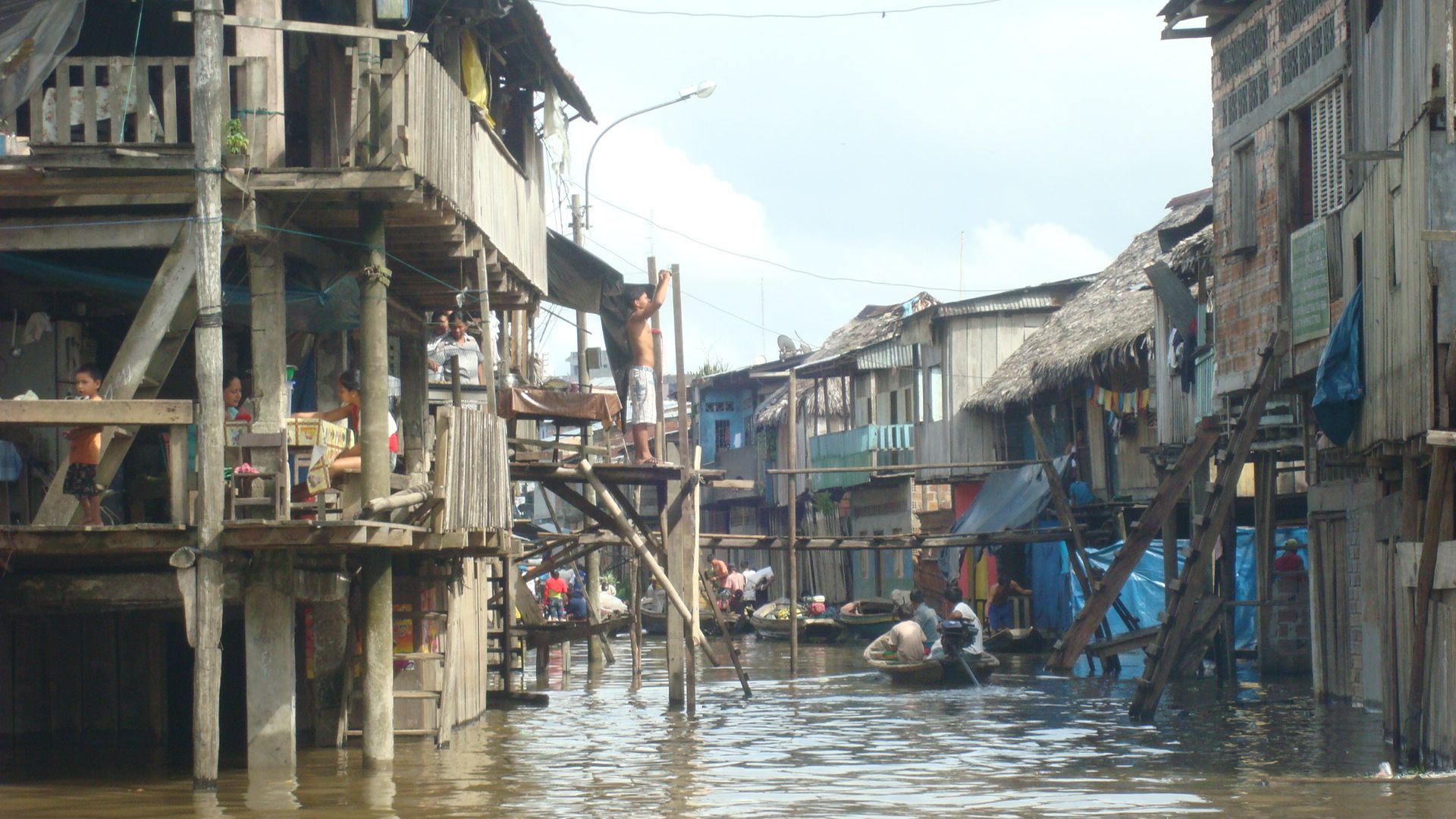 |
| Floating house with outhouse on left | Boy on log "boat," house in background | Washing dishes at a floating house | A street with houses on stilts |
